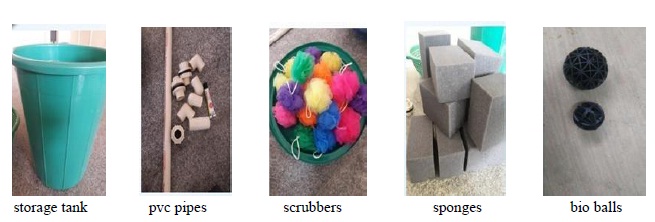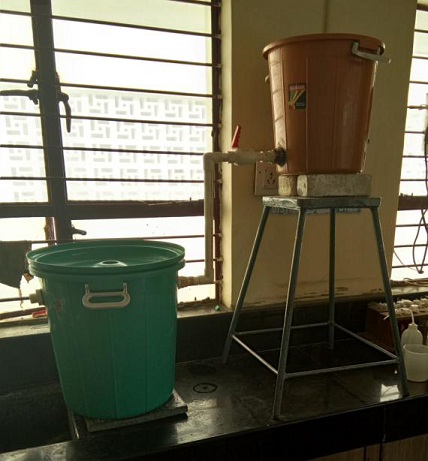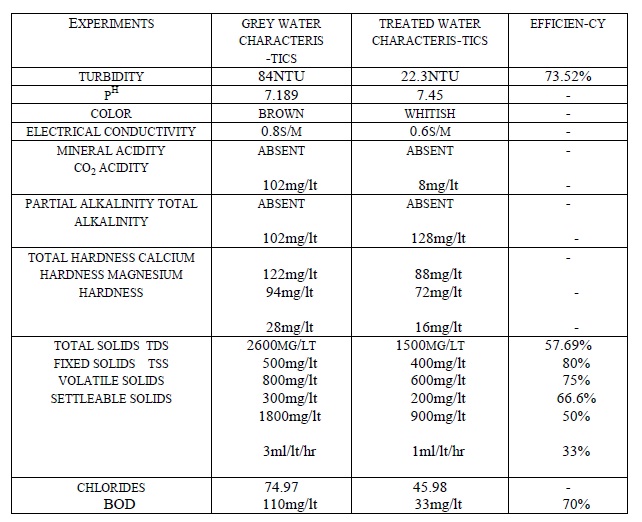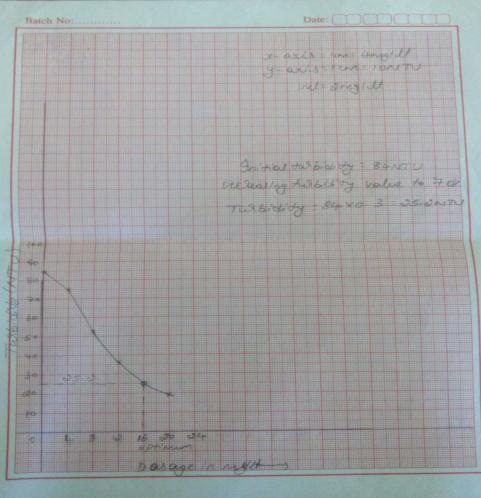





Published on Nov 30, 2023
In India, the water shortage is one of the major issues coming from the rural areas area which necessitates grey water treatment options generated from domestic sources in rural areas and need for conceptualizing a treatment scheme to reduce cost. Water is a fundamental source to our existence. As cities expand and population grows, the demand for water is rising. With increase in population, there will be an increase in stress on sanitation and wastewater disposal system. Grey water is slowly gaining importance in the management of water resources. The benefits of well-organized grey water management is that it offers a tool for coping with water scarcity and reduces the amount of pollution to enter the hydrological cycle. Grey water can be defined as the wastewater generated from baths, showers, hand basins, washing machines and dishwashers, laundries and kitchen sinks.
Grey water contains microorganisms, chemical contaminants and physical contaminants. Our study focuses on treatment of grey water using naturally available materials and to reduce pollutants in laboratory scale with the help of designed biofilters.
In our study, we use the low cost biofilters which consists of a bed of random or modular plastic media through effluent percolates, scrubber, sponges and bio-balls. Bio-balls consists of activated carbon which kills micro-organisms present in the waste water. These are advantageous over the other bio-filter media as the surface is will not clog up when used with a pre-filter which may happen as in the case of ceramic material with micropores. Sponges and scrubbers helps removing floating matters (solid particles) present in grey water. The treated water can be used for domestic purposes such as washing of utensils and clothes, bathing, and flushing as well as agricultural purposes.
Keywords : Grey water, microorganisms, chemical contaminants and physical contaminants
Water is a fundamental source to our existence. As cities expand and population grows, the demand for water is rising. With increase in population, there will be an increase in stress on sanitation and wastewater disposal system. The concept of three R’s, i.e. Reduce, Reuse and Recycle is a part of cleaner production on pollution prevention at source rather than the end of pipe treatment. In other words, it is vitally important to treat wastewater in order to save a precious source and protect the environment from pollution.
Throughout the world, supply of water to the rural population has been a challenging risk. Using domestic grey water is one way of contributing to the achievement of this reuse target (Grey water use, October 2007). In India, the water shortage is one of the major issues coming from rural area. Grey water is slowly gaining importance in the management of water resources.
The benefits of well organized grey water management is that it offers a tool for coping with water scarcity and reduces the amount of pollution to enter the hydrological cycle.
Grey water can be defined as the wastewater generated from the baths, showers, hand basins, washing machines, and dishwashers, laundries and kitchen sinks. This means wastewater from the toilets is excluded when considering the sources of wastewater of a household. Grey water contains micro-organisms, chemical contaminants (e.g. nutrients and salts) an physical contaminants (dirt and sand).
Filtration is one of the most important treatment processes used in water and wastewater treatment. In water treatment, it is used to purify the surface water for potable use whereas in wastewater treatment, the main purpose of filtration is to produce effluent of high quality so that it can be reused for various purposes. Any type of filter with attached biomass on the filter media can be defined as bio-filter. It can be trickling filter in wastewater treatment plant, or horizontal rock filter in a polluted stream, or granular activated carbon or sand filter in water treatment plant bio-filter as been successfully used for air, water and wastewater treatment. It was first introduced in England in 1893 as trickling filter in wastewater treatment (Metcalf and Eddy,1991) and since then, it has been successfully used for treatment of domestic and industrial waste water. Originally, bio-filters was developed using rock or slag as filter media, however at present, several types and shapes of plastic media are also used. There are number of small package treatment plants with different brands names currently available in market in which different shaped plastic materials are packed as filter media and are mainly used for treating small amount of waste water (e.g. from household or hotel).
Biological treatment especially by Granular activated carbon bio-filter as been found effective in removing organic substance that can cause the microbial growth in pipelines and is normally recommended to be included in water treatment process after ozonation ( Bouwer and Crowe, 1988; Hozalski et al.,1985 Ahmad and Amirtharajah ,1988; Carlson and Amy,1998). Bacterial masses attached on to the filter media as bio film oxidize most of the organics and use it as energy supply and carbon resources. Removal of organic matters not only impairs microbial re-growth but also reduces on odor, the amount of organic precursor (available to form disinfection by-products, corrosion potential) and other micro pollutants of health and other aesthetic concern.
The present study is made to assess the grey water produced at domestic sources of Girls and Boys hostels of SJCIT, Chikkaballapura and need for conceptualizing a treatment scheme to conserve water. In general, design principles were based on the need to reduce cost. As a result of simplicity, readily available materials and low maintenance become key principles for rural area. The present study is mainly focuses on the theoretical and modeling aspects, and the performance of the bio-filter in removing organics, nutrients, and some specific pollutants from water and wastewater.
To set up the working model.
To find out the characteristics of grey water.
To study the performance of laboratory setup.
To find the characteristics of grey water.
To determine the efficiency of the treatment process.

Laboratory scale grey water treatment system was designed for 10 liters capacity. Filtration unit of 34 liters capacity containing bio balls (activated carbon) , sponges , scrubbies , pebbles/rock , fruit basket and storing unit for treated grey water of 34 liters capacity.The easily available and natural materials were used such as bio balls (activated carbon) , sponges , scrubbies , pebbles/rock , fruit basket which is the waste materials used for experiment. The bed height of each material was determined and finalized by experimentation.The gravitational flow was used for flow of water from grey water unit to storing unit of treated grey water.The samples were collected from girls hostel for analysis. These samples are analysed by standard method at laboratory.The parameters such as Chlorides, Acidity, Alkalinity,Total hardness, Total suspended solids (TSS) ,Total dissolved solids (TDS), Chemical oxygen demand (COD), Biolchemical oxygen demand (BOD), Turbidity, Optimum dosage of coagulant, pH, Electrical conductivity are determined from grey water and treated water sample for the study of grey water treatment systemBio-filters have three separate layers scrubber, sponges, bio balls.
Each of these layers removes different things, leaving the water that comes out of them can be used.The first layer, scrubber, is there to remove large organic impurities from grey water. The water then moves on to sponges which removes small organic impurities. Finally water passes through bio balls (activated carbon) to remove bacteria and some chemicals.

• The bio-filtration process results in a complete decomposition of the pollutants, creating no hazardous bi-products.
• Bio-filtration method as low initial investments
• Operating cost is minimum and also it is easy to operate.
• The cost of domestic water consumption is significantly reduced.
• Reduces the amount of waste water entering the sewer line.
Results

The jar test is conducted to determine the optimum dosage of the coagulant to be added in to the sample in order to reduce the turbidity
From the above graph the turbidity has been reduced from 84NTU to 25.2NTU. The optimum dosage of coagulant is 16mg/lt for 1lt of sample. For 34lts of sample it requires 272ml of coagulant. After treatment turbidity reduced to 9.3NTU.

The levels of TDS and TSS of grey water were 500mg/l and 300mg/l respectively which are high and it was due to soap and dirt contamination. When grey water was treated TDS is reduced to 400mg/l and TSS is reduced to 200mg/l.
The pH and turbidity of grey water were 7.189 and 84NTU respectively. Grey water is typically alkaline due to use of soap and detergents. When it is treated the turbidity is reduced to 22.3NTU.
BOD of grey water was 110mg/l and when it is treated it was reduced to 33mg/l.
By using jar test method the turbidity has been reduced to 9.3NTU.
1. Vijaya V. Shegokar, Dilip S. Ramteke and Pravin U. Meshram Design and Treatability Studies of Low Cost Grey Water Treatment with Respect to Recycle Reuse in Rural Areas”, International Journal of Current Microbiology and Applied Sciences in 2015.
2. Nirmala M.D, Muthukumar K, Ravikumar G. Grey Water Treatment Methods”, International Conference on Current Research in Engineering Science and Technology (ICCREST) in 2016.
3. Ukpong E.C, Agunwamba J.C. Grey Water Reuse for Irrigation, International Journal of Applied Science and Technology in 2012.
4. J.S Lambe, R.S Chougule Grey Water Treatment and Reuse, IOSR Journal of Mechanical and Civil Engineering (IOSR-JMCE).